
(2009-2013 data via Census Explorer)
Part of NW Portland Week.
Portland’s glittering Pearl District has about three times as many income-restricted units as the 82-acre New Columbia community in North Portland, Oregon’s largest affordable-housing development.
To be clear, this fact (first noted by Iain MacKenzie) doesn’t mean the Pearl has more poverty. Many of its 2,379 “affordable” units are targeted to people whose households make about 80 percent of the region’s median income, or $52,950 for a family of three — more or less middle class.
But before we get any deeper into NW Portland Week here at BikePortland, we should bust the myth that because there are many rich people in northwest Portland, there are no poor or middle-class people.
Take, for example, the neighborhood between 18th and 23rd, Burnside and Thurman: 85 city blocks, 6,485 Portlanders. One in four of them lives in poverty. Another 15 percent are in households making $100,000 or more per year. The other 60 percent are fairly evenly distributed in between.
That’s unusual. And the science is extremely clear: if you are going to be poor, a neighborhood with lots of non-poor people is probably the best place to be.
For all of Portland’s many deep and unsolved problems, income integration is something our city has actually done better at than most. Maybe that’s why the reality of northwest Portland is hard for so many people to understand: it is simultaneously one of the most desirable parts of town to live and a place where thousands of poor people manage to get by.
This isn’t to deny that east Portland is home to many more people in poverty, and in need of far more investment, than northwest Portland. Those things are true.
And it’s also not to claim that being poor in northwest Portland is pleasant. It can be very unpleasant.
“If you wanted to buy crack, step in human shit on the sidewalk, or line up around the block for services…Old Town’s your best bet,” said Carl Larson, who worked in Old Town for eight years as an employee of the Bicycle Transportation Alliance. “When people pull this simplistic ‘Equity = East Portland’ bullshit, they’re forgetting how much suffering and need there is in inner NW Portland. It’s right next to the Pearl but it’s a different world.”
Advertisement
Where do people who aren’t rich live in Northwest Portland? In buildings like the New Palace, built 1908, which rents 12 rooms at 3rd and Everett for under $481:
Or Gallagher Plaza at 21st and Kearney, built 1981, a Home Forward building that accepts federal housing vouchers to help pay for 85 one-bedroom apartments rented to people making up to half of median income:
Or maybe even the Park Regent at Everett and Trinity Place, built 1930, which is currently asking $1,195 for a one-bedroom:
The fact that poor people are scattered among middle-class and rich people in northwest Portland does not mean the area is just as deserving of investment as any other part of the city. But the false story that northwest Portland is simply a place of privilege has been unduly damaging. It’s been an albatross weighing down Portland’s bike share plans for years. It was the root of mayoral candidate Sho Dozono’s 2008 attack on his rival Sam Adams that put the Flanders Street Bridge — a supremely cost-efficient project that would have had a huge effect on northwest Portland transportation by now if it hadn’t been scrapped under pressure — on ice for the next decade.
Sometimes, it’s possible to help poor people and rich people at the same time. In fact, that’s a big part of what makes income-integrated neighborhoods — like most of Northwest Portland — such a great idea.
— Michael Andersen, (503) 333-7824 – michael@bikeportland.org
BikePortland can’t survive without subscribers. It’s just $10 per month and you can sign up in a few minutes.


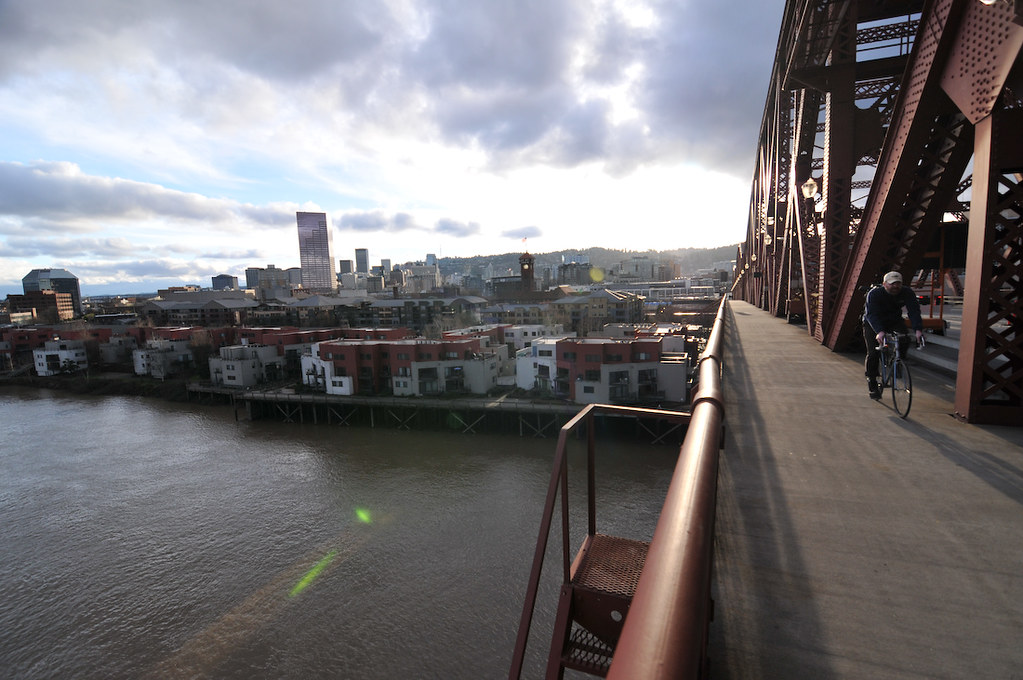
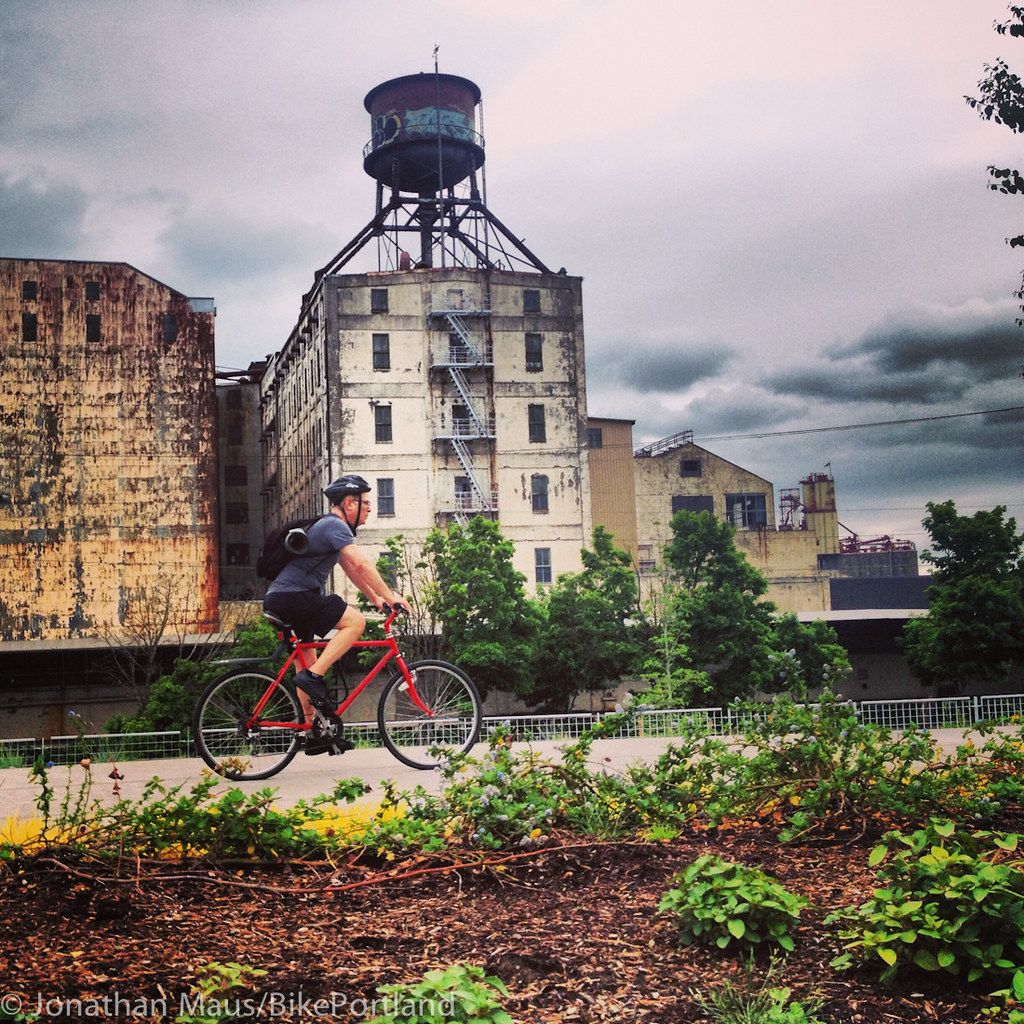
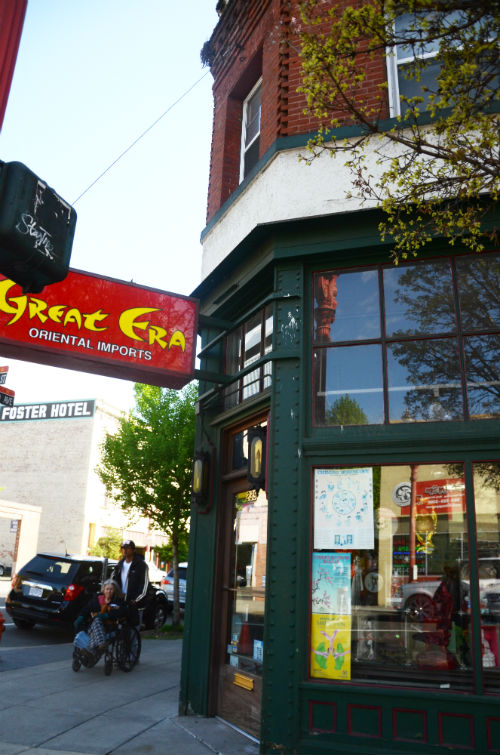
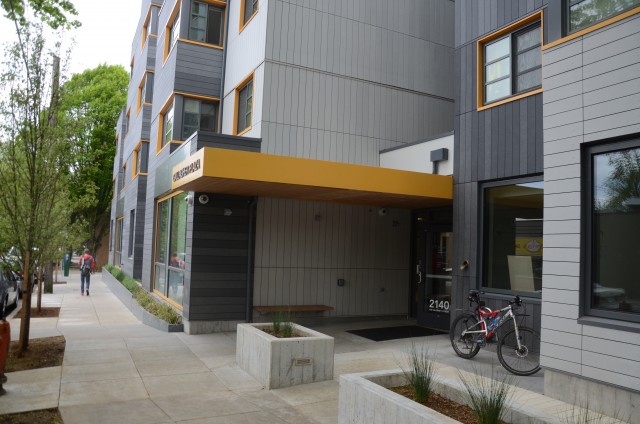
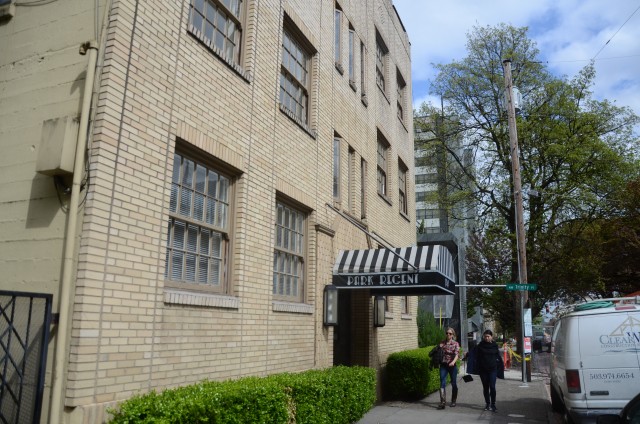
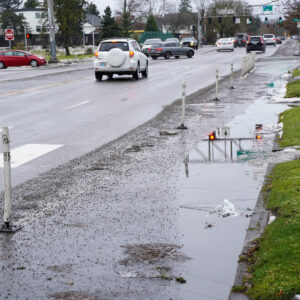

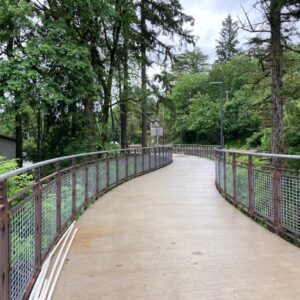

Thanks for reading.
BikePortland has served this community with independent community journalism since 2005. We rely on subscriptions from readers like you to survive. Your financial support is vital in keeping this valuable resource alive and well.
Please subscribe today to strengthen and expand our work.
Bravo, Michael. Finally some accurate media coverage on the state of socioeconomics in NW Portland.
Yep. There are a lot of dated opinions out there.
I’m noticing that rent pressure is softening in NW, at least north of Lovejoy. That means building apartments is working.
ah, yes, more with the classism stuff. what’s a ‘rich’ person exactly?
Definitions vary, but I’d call someone who has more income or wealth than 75% or 85% of the other people in society “rich.”
Context, yesss. Absolutely, context should factor into these discussions more rather than the default of “X amount” makes you rich.
and hows that? does that take into account debt load, family obligations, business/work expenses? who cares what you call it?
Well, for one thing, I think/hope business/work expenses are netted out from most measures of household income? If not, they should be. And, family obligations are certainly a thing. I think household income per capita is probably a better measure of richness than household income, but unfortunately, the Census bureau does not make household income per capita easy to tease out. And, debt load is a thing too – but if you have a high income, it’s usually a heck of a lot easier to pay down your debt.
Overall, household income is an imperfect metric, but I bet if you took a look at 100 Portland households making more than the 80th percentile income of $106K, you’d find that the vast majority of them (us) have lives that are “rich” compared to 100 average Portland households (median household income is $53K).
http://statisticalatlas.com/place/Oregon/Portland/Household-Income
you’ve never owned a small business, huh? household income is often very much wed to business expenses, whether you think they should be or not.
Have you ever had to afford day care for a child? how about 2 at the same time? $100K is barely breaking even with kids, a mortgage, the occasional car payment, etc. such metrics are meaningless, but do help wind up the classist crowd that exists on bikeportland.org.
Nope, never owned a small business. But, looks like the Census (the main data source for these things) asks for income net of business expenses. So, if respondents are up on their accounting (a big if, I know, for a small business – but hopefully people can make an estimate of their business expenses and subtract them) then business expenses shouldn’t be included.
http://mcdc.missouri.edu/allabout/measures_of_income/
Yes, I am currently paying daycare for two small children. And no, I don’t agree with your assertion that an 100K income for a family of four with kids in daycare is barely breaking even. It’s entirely possible to save a TON of money for retirement at that level. Check out mrmoneymustache.com !
A ‘rich’ person is anyone that makes more than you do. It is very much like bicycling. Anyone riding slower than you is a impediment and anyone faster is out of control.
after almost 40 years of wage stagnation in the context of increase corp profits and wealth concentration, the “poors are just jealous” argument is silly.
That’s an old George Carlin joke, but he was talking about driving.
“Have you ever noticed that anybody driving slower than you is an idiot, and anyone going faster than you is a maniac?” – George Carlin
Personally, I use “rich” as a descriptor, not an insult. The 80th percentile household income in Portland is $106K. My household income is higher than that (and, we’re not a gigantic household with 12 people and four income-earners – it’s just two adults and two kids). So, compared to most other households in Portland, we’re rich. It’s just a fact, not something that makes us horrible people.
Other descriptors for the same thing, like “high-income” or my favorite, Obama’s “fortunate,” feel like euphemisms to me. “Wealthy” seems meaningful, but given that plenty of rich American households spend almost all their income rather than letting it accumulate into wealth, it’s probably not the most useful in this context.
He’s not accurate in the 70-80% as almost all low income Pearl Buildings such as the Ramona, Sitka, Abigail, Pearl Court, etc are all 60% of the median income or less. Only Lovejoy Station is for 50-80% of the median income. 60% is I think up to $39K for a family of 3.
There’s two percents of income going on here, which is causing the confusion. The one I’m using is the percentile of the total income distribution. What the 80th percentile of the total income distribution being $106K means is that 80% of households make less than $106K. This is used to characterize population income as a whole.
The one I think you’re using, Jennifer, is the percent of median household income, which is used to qualify or disqualify people to live in income-restricted housing. Median household income is the income at which 50% of households make more and 50% make less. I think it’s about $53,000 in Portland. A percentage (60%, 80%, etc.) of THAT is the upper limit for living in income-restricted housing (“Affordable Housing”). For example, I bet some of the income-restricted units in NW Portland can only be rented by people who make less than the $39,000 value you’re citing for a family of 3.
I was actually trying to reply about the authors statement:
<>
This was incorrect. Over 90% of the units are for people making under 60% of the median income which is about $39000 for a family of three, not the $53000 he stated. Very few units affordable units are available for people making up to 80% of the median income. This info is relevant as many people stated that $53,000 is not low income. But with the reality being 60, not 80% it really changes the demographics–there are a lot of very low income people in the Pearl as most are not making exactly 60% they’re anywhere between 0-60%.
Just trying to clarify the myth that the Pearl is all rich or “middle class.”
Thanks, Jennifer. I didn’t realize that so many of the income-controlled units in the Pearl were at 60% rather than 80% MFI.
Being “rich” is somewhat a matter of perspective.
The link for the Census data seems to be wrong, it points to commute time, where clearly the link image shows median income implied.
Sorry, I changed it. But unfortunately the Census Explorer site doesn’t let you link directly to the data — you have to fiddle with the options to find the median income data I used for this.
Not the same pretty picture, but census factfinder lets you link to data if you click on Bookmark/save. This should be the 2013 median household income table for all census tracts in Multnomah county.
http://factfinder.census.gov/bkmk/table/1.0/en/ACS/13_5YR/S1903/0500000US41051.14000
Should you do further research, take a look at the 1970 & 1980 census for NW. I think you’ll find the population (people, not households) hit the area maximum in the 70s, and has since declined to about 40% of what it was – the highest density and poorest section of all Portland. A bit like East Portland today, a sea of poverty with islands of extreme wealth, which I have no doubt will (again) become the most sought-after area to live in Portland within the next 30 years, as it was, ironically, in the 1970s.
Average household size (people per unit) has been declining continually in the neighborhood. But that’s a city-wide and national trend as well.
The mean average number of people within a household varies considerably throughout Portland. According to the Census and Portland’s Office of Neighborhood Involvement, the average household size in the Pearl is 1.43 people per household. In Powellhurst-Gilbert (a vast multi-ethnic neighborhood in East Portland with high poverty between Division & Foster), there are over 3 people per household, on average. Parts of Pleasant Valley, in the outer extreme of southeastern Portland, have nearly 4 persons per household, as does Glenfair, Portland’s poorest neighborhood (Rockwood/Rosewood area).
In general, if you are a single parent raising 2 or 3 kids, you are very unlikely going to be living in northwest Portland, and much more likely living where rent is cheap, but where basic services are often lacking, which tends to go hand-in-hand with cheap unsubsidized rent.
I’m not quite following. Are you saying Northwest Portland has 40% of the population it did in the 1970s?
Yes. It has far fewer people now, than it did in the 1970s, even though it probably has more units, and more households.
I don’t think that’s correct. According to this this the Northwest District Assocation had 13,399 people living in it as of 2010. At the time of the 1980 Census Northwest had 11,524 people.
Great resource!!! Do you have 1960 or 1970 as well?
From probably the same page as your numbers (page 17 of the Adopted Northwest District Plan appendix):
“The Northwest area’s overall population level has experienced significant shifts over the past fifty years. Like many inner-urban areas in the country, Northwest Portland experienced a moderate, but steady, decrease in population in the decades following World War II. The causes for this trend are multiple but include suburbanization, decreasing family size, and economic factors. Beginning in the 1980s, Northwest Portland began to gain population once again, as the area became more attractive as a residential and mixed-use district. However, despite significant investment and new development in the area, overall population increase has remained quite moderate. Table 7 indicates that between 1980 and 2000 the population increased by about five percent, compared to 45 percent in the city as a whole (however, a significant portion of the city’s growth in that time frame was due to annexations). Table 10 shows that the Northwest Portland has a lower average household and family size than the city as a whole. This, in combination with relative lack of vacant and under-utilized land (and therefore constrained space for new housing development), in part explains the relatively modest population growth.”
I don’t – I just found those on the City website. Statistics at a neighborhood level might not exist before 1980, due to the fact that the formal Neighborhood Association system was created in 1974.
My sense is that the population of the Northwest District Association has been slowly increasing for the past 3 or 4 decades. I think it declined in the 1950s and 1960s due to the suburban exodus, but soon recovered. It’s long before I lived in Portland (or, for that matter, was born) but the story I’ve always heard is that Northwest was one of the first of the inner neighborhoods to buck the trend of depopulation.
Given the huge volume of units being constructed in NW I would expect the population jump between 2010 and 2020 to be quite dramatic.
I just found the 1977 Northwest District Plan (pdf): http://www.portlandoregon.gov/bps/article/94081.
(page 26)
Population 1960: 14,358
Population 1970: 13,495
Apparently, the district had its maximum population in the 1940s during WWII. Its minimum was probably around 11,000 in the early 1980s.
From ONI:
Population 1980: 11,524
Population 1990: 11,702
Population 2000: 12,596
Population 2010: 13,399
So I am in fact wrong, the population hasn’t dropped 40% since 1970. It hasn’t grown much either – it’s still below its 1960 levels, in spite of all the new construction.
Just going to point out that Social Security Income for someone disabled or a senior citizen is still below the lowest income shown on that map.
That’s true. Also note those are median incomes, which means half the residents in each tract live in households that earn less than the amount shown.
Doesn’t it mean half the households, not residents, earn less than the median income? Single person households have income that’s on average less than larger households. So less than half the tract’s residents would live in a household making the median or less.
Sorry, I misspoke. You’re right.
Is all of Northwest Portland including Linnton included in your definition?
Judging from the photos, it looks like Michael includes the Northwest District, Old Town/Chinatown, Pearl District, & NW Industrial in his definition of Northwest Portland. I’m not sure if he also includes any of the other NWNW Coalition neighborhoods of Downtown, Goose Hollow, Hillside, Forest Park, Linnton, Northwest Heights, Arlington Heights, & Sylvan-Highlands.
Wait…paying $1,200 for a one-bedroom qualifies as “poor”? Am I misinterpreting that caption?
I lived in Portland as long as I could afford to, but I left for Greensboro because I had been unemployed for 7 years and I could no longer afford my rent, which went from $1,035 to $1,400 in October 2015 (Hazelwood, 2 bd, A/C, W/D, 1,000 sq ft). My new place is 2,800 miles from MAX and Powells, but my rent is $675 for the same specs, with bus service just out the door. Very friendly people here, even if they do drive like maniacs.
According to a Sept 2015 Oregonian article, the mean average rent in Portland for a 2 bedroom was $1,550/month & 1 bedroom was $1,300/month, so yes, $1,200 is near the city average if its for a 1 bedroom; if a studio, then it’s a little high, but not very, and it is probably very low for Northwest Portland.
According to the 1977 Northwest District Plan, average rent in the district had risen 44% from 1960 to 1970, when it was an astronomical $97/month, which is apparently $592 in today’s money. Which leads me to say that everyone who is renting in Portland is probably paying twice as much as they should, that rents have risen (since 1970) at twice the rate of national inflation (CPI).
. . . or, the CPI (Consumer Price Index) which is used to calculate the “official” inflation number that the government publishes is bogus. Every time that some sector (e.g. housing, fuel) of the CPI becomes expensive, the government removes that item from the “inflation” calculations so it appears that “inflation” is low, and reasonable.
This article provides an excellent summary of how the CPI has been artificially adjusted by different administrations since the 70’s.
http://www.thenewamerican.com/economy/economics/item/4401-dangers-of-an-underreported-cpi
I wonder how many people are making 40K in the Pearl. Sure that is median, I’d guess that is the hollow middle with two modes at 80K and close to 0.
Fortunately, you can find out!
http://statisticalatlas.com/neighborhood/Oregon/Portland/Pearl-District/Household-Income
Thanks for the link. It won’t open for me at, but it I’m at work. I’ll try again from home.
Great link. I even looked up Greensboro. We have 5 wards, each with a city council representative – all seem to have been gerrymandered along racial lines – 2 white districts, 2 black, one mixed race & immigrant. Very North Carolina.
Look up Pearl Court, station Place Tower, the Ramona, The Sitka, Lovejoy Station, The Abigail, etc and you’ll get your answer. Hundreds and hundreds with many earning much less. The difference is you can’t tell that there’s a lot of poverty in the Pearl as things have been designed well and the buildings are well run.
have your readers looked at housing prices city wide recently? the pearl and northwestl = the “rich neighborhood” is kind of a 90s assumption. but nice maps and stats none the less. thanks!
Actually, the low income units in the Pearl, apart from Lovejoy Statjon, are for people earning 60% of the median income or less.
This is all correct. The new Framework building on 10th and Glisan will be 80% MFI, however.
On a whim, I clicked on the Home Forward link provided in this story.
Surfing the site, I managed to learn that:
1. Based on my current income, I currently qualify for an astounding number of properties listed;
2. In two more years I will also qualify for some properties based on my age;
3. The average wait time for a property whose waiting list is currently closed [not taking new applicants] is around five years, with the shortest being two years and the longest ten or more;
4. Wait lists on every Home Forward property in Portland are closed.
Considering that we have a hard time convincing developers to build new affordable housing — and by affordable, I mean affordable for a single person earning around $15,000 a year, or a couple earning around $27,000 a year — I think we all know how this story plays out.
Anyone who currently lives in subsidized housing is going to stay there until they die. And truly affordable units simply won’t be built fast enough. I don’t see this story ending well, nor do I see ANY close-in quadrant of this city remaining available to the poor for very much longer.
And I don’t see this changing as long as we accept an economy that is based on wealth hoarding, engineered scarcity, overpopulation and unchecked consumerism.